Submitted by WA Contents
GRAU Architects built a tea house pavilion giving a ceremonial impression overlooking a lake
Czech Republic Architecture News - Mar 28, 2023 - 13:39 3492 views
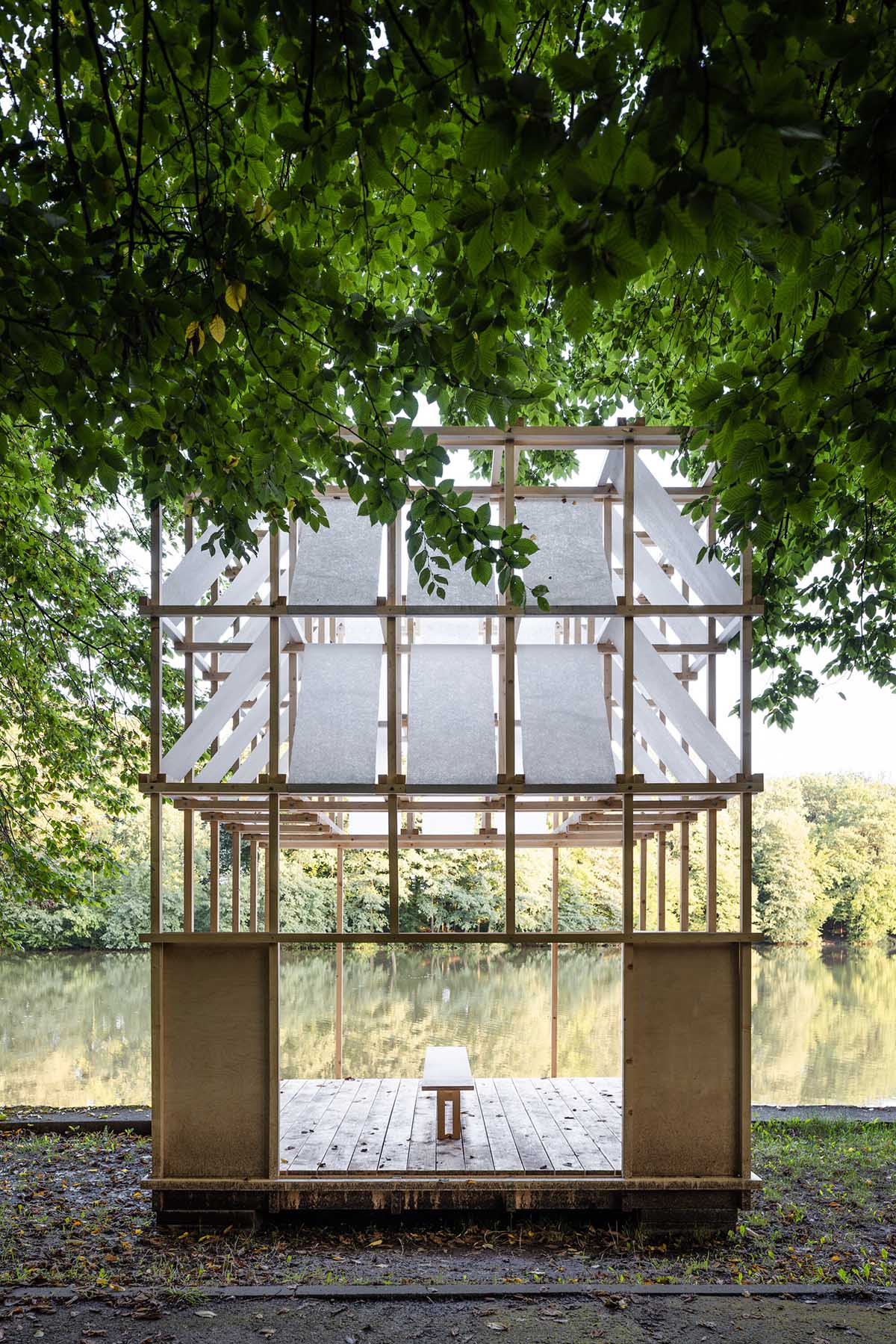
Slovakian architecture studio GRAU Architects has built a minimal tea house that gives a ceremonial impression overlooking the Hrabinka Lake in Český Těšín, Czech Republic.
Called Tea House Pavilion, the 9-square-metre pavilion, located on the bank of the dam in Český Těšín, was designed as an intervention in public space as part of the Mood for Wood international workshop.
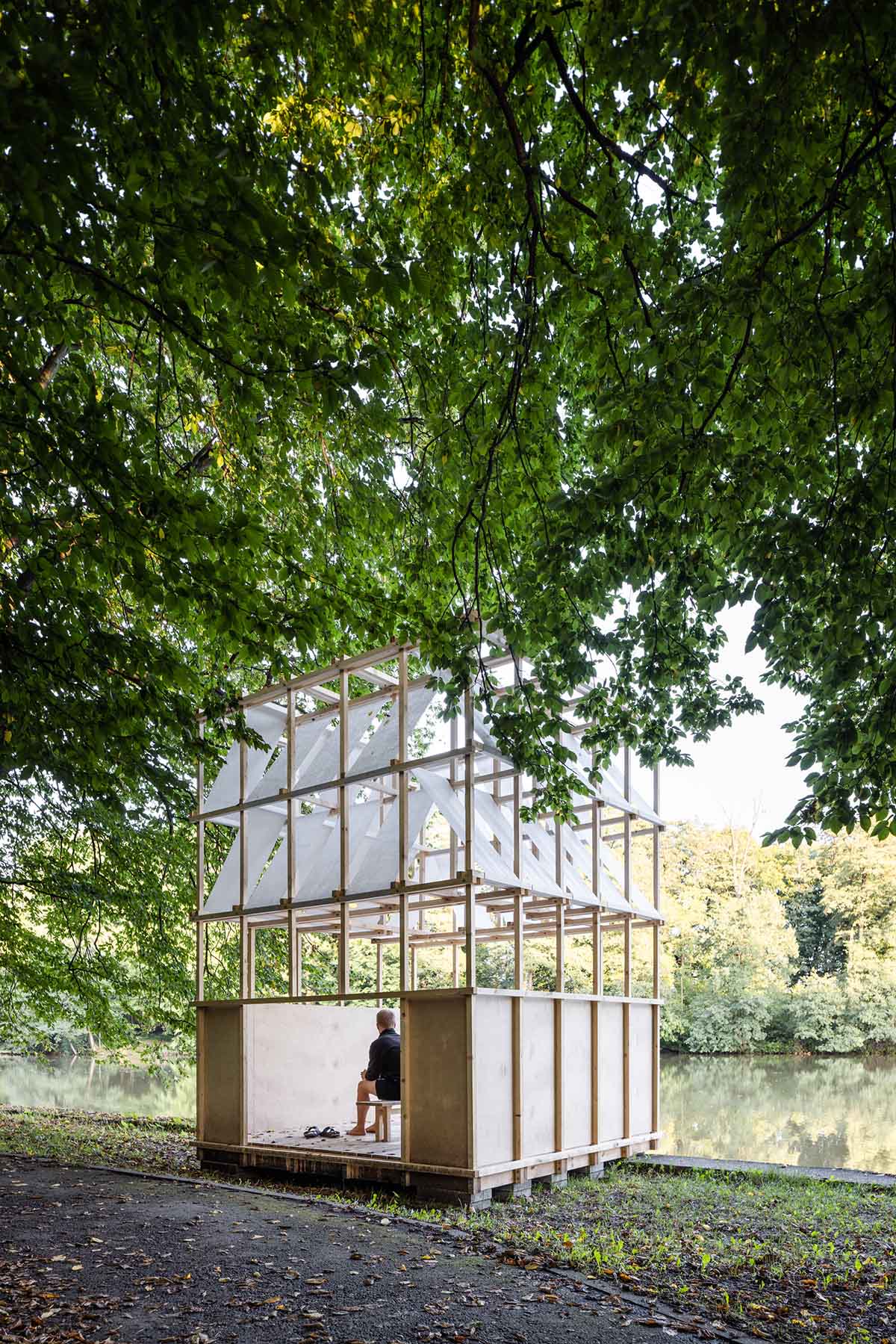
The studio was inspired from the traditional Japanese architecture of tea houses with interpretation of their contemporary means of expression.
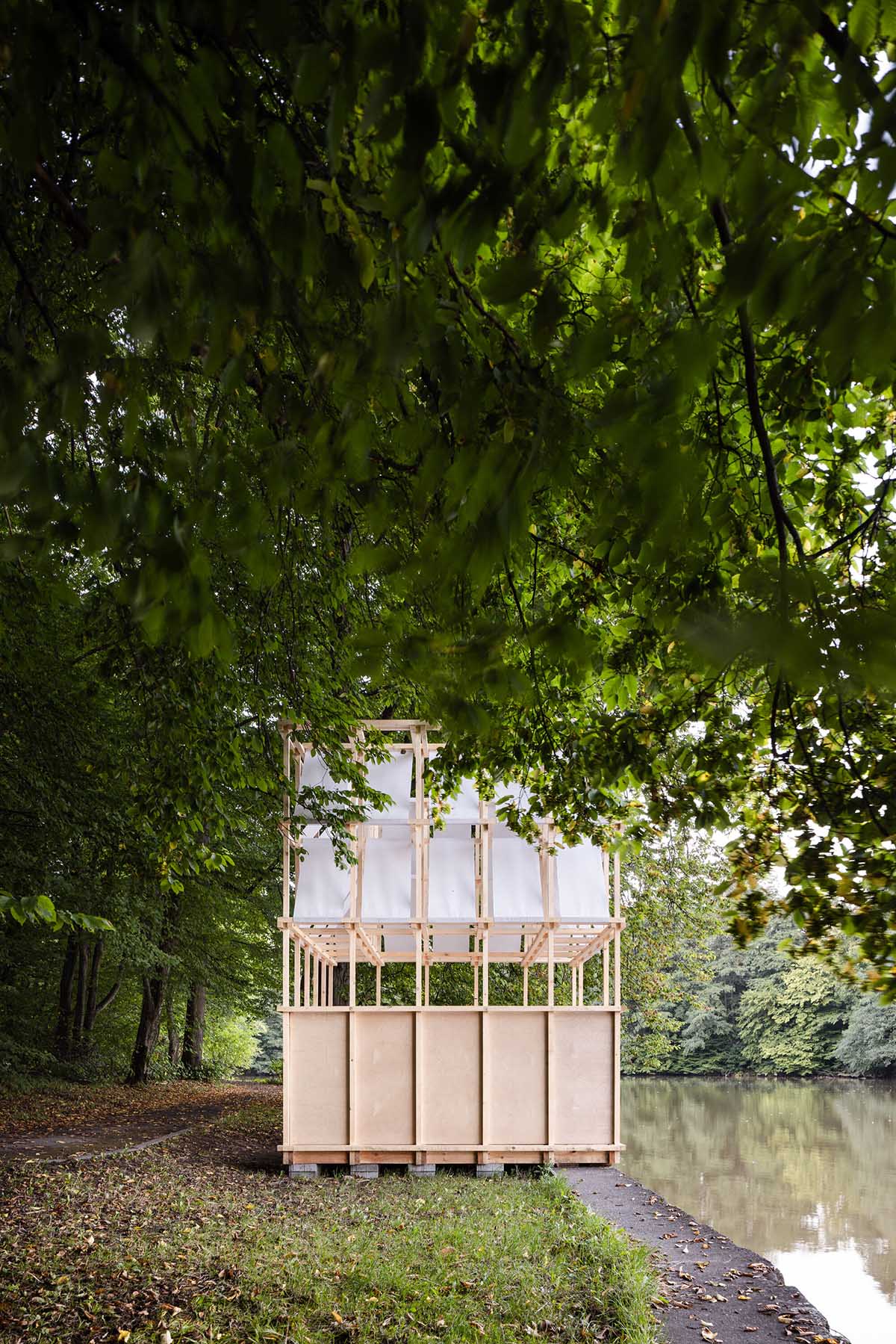
GRAU Architects has worked with a simple design principle of connecting wooden elements that create a complex static structure.
The pavilion, made of birch plywood and geotextile for its roof, invites people to a close experience with nature, focusing visitors' attention on the water reservoir - views, sounds, movements.
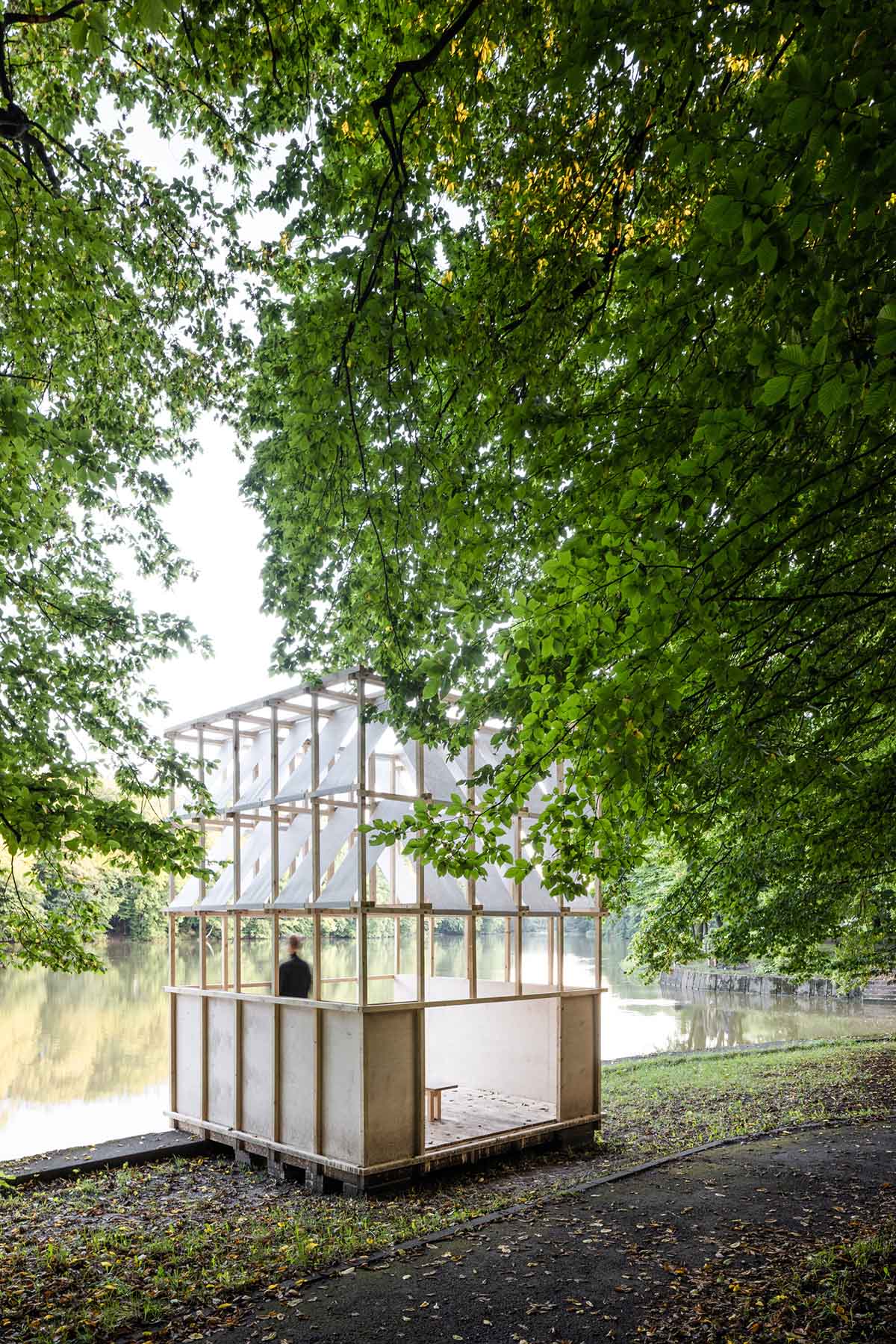
"It forces a person to stop, to slow down thanks to the endless view into the treetops, the defined view of the boundless calm water surface and the gentle closure from the surrounding bustle of everyday life," said GRAU Architects.
The interior of the pavilion comfortably accommodates upto six people, sitting face-to-face around the table during the tea ceremony, which gives the ceremony a certain impression of intimacy.
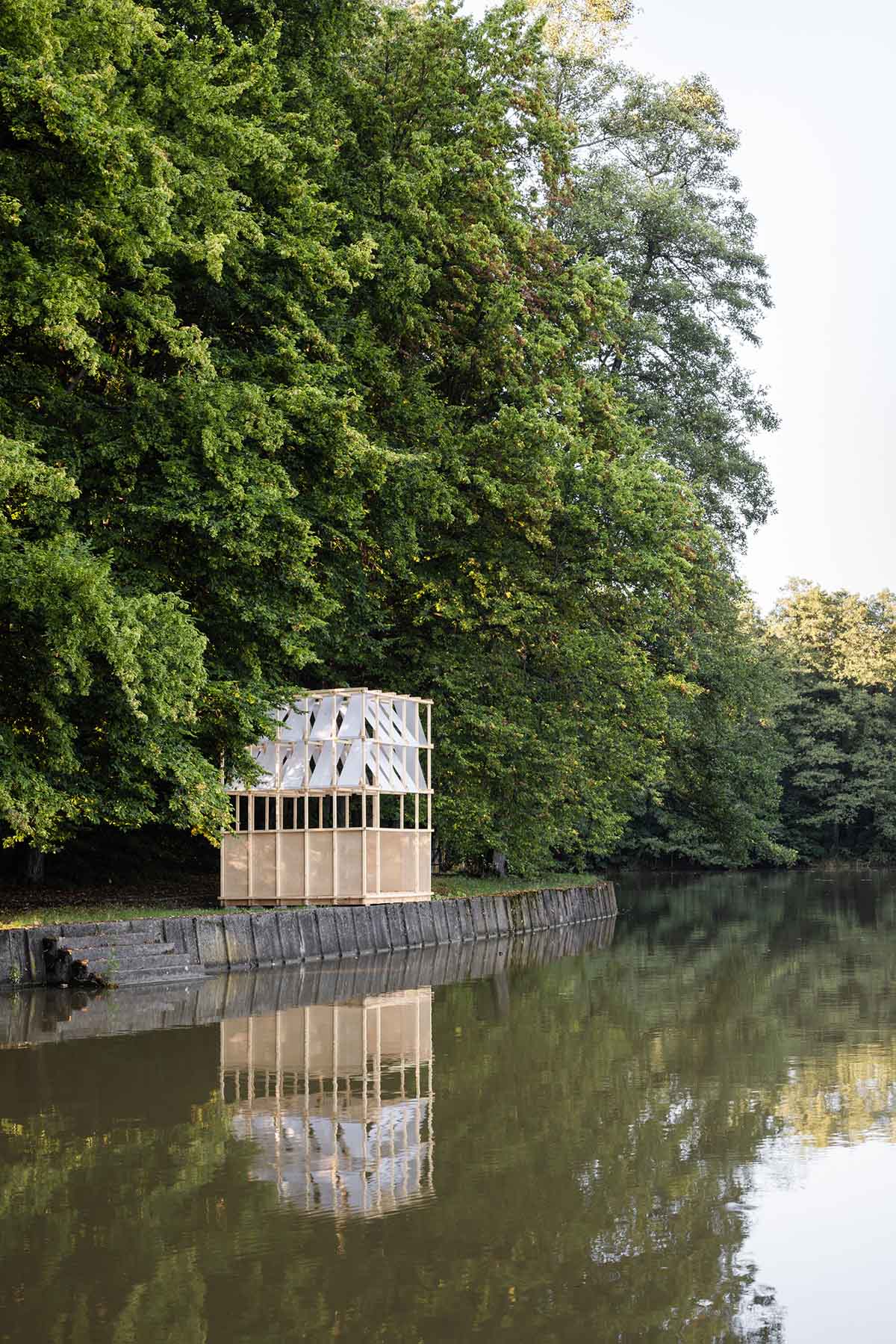
The subtle/light, open construction refers to the traditional Japanese interior but brings modern elements into it. It fits harmoniously and delicately into the surrounding environment.
The studio has transferred several rules of the traditional tea ceremony into the final design.
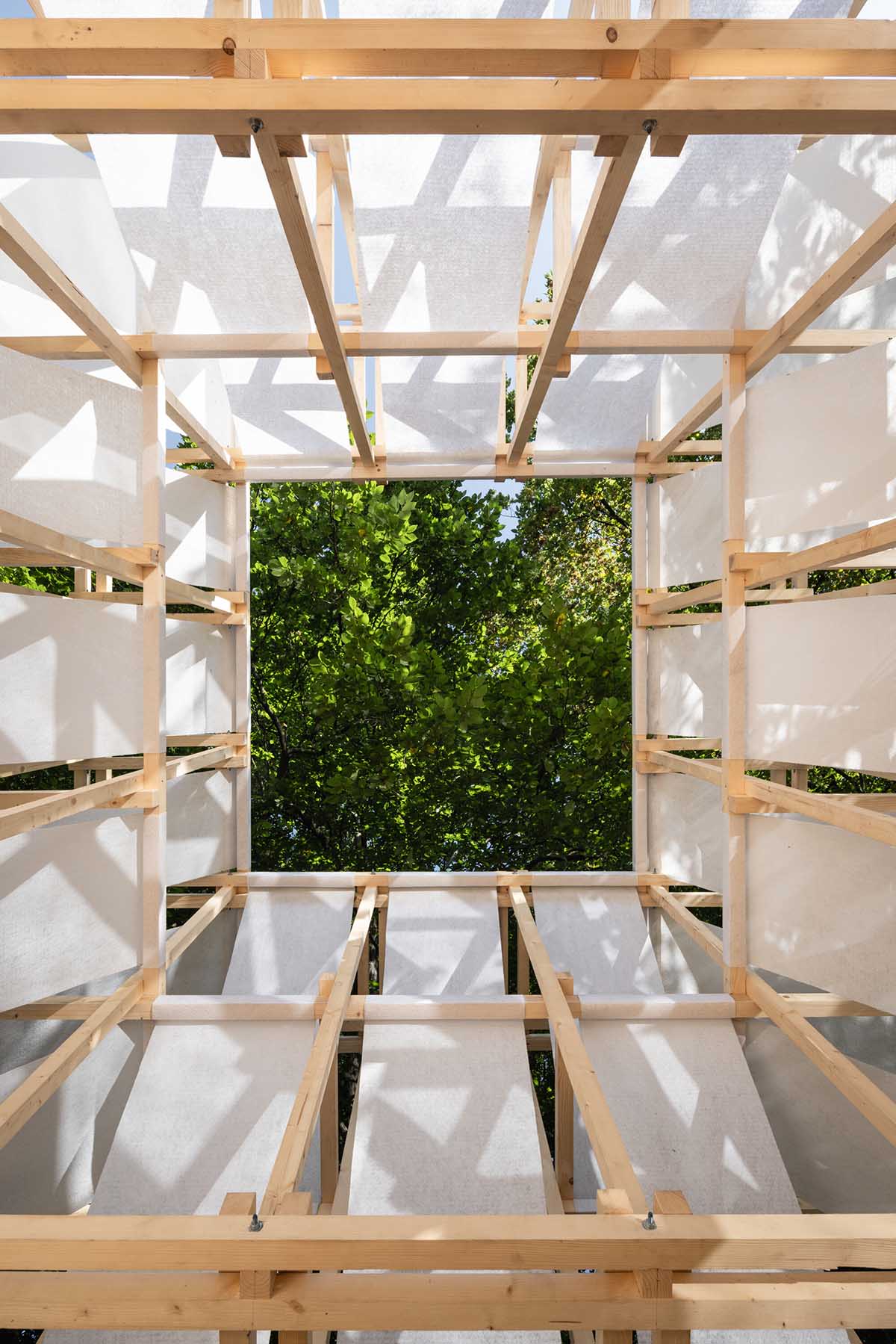
For example, when entering the interior, each visitor must bend down to pass under the lowest horizontal beam of the structure, which refers to the niriji-guchi door, a symbol of the equality of all participants in the ceremony.
At the same time, upon entering, a rectifying view opens up attention to the water reservoir. A low table in the middle of the layout invites visitors to sit on their knees as is customary in Japanese culture. Stiffening of the lower part of the structure with plywood boards provides a feeling of privacy and detachment from exterior noises.
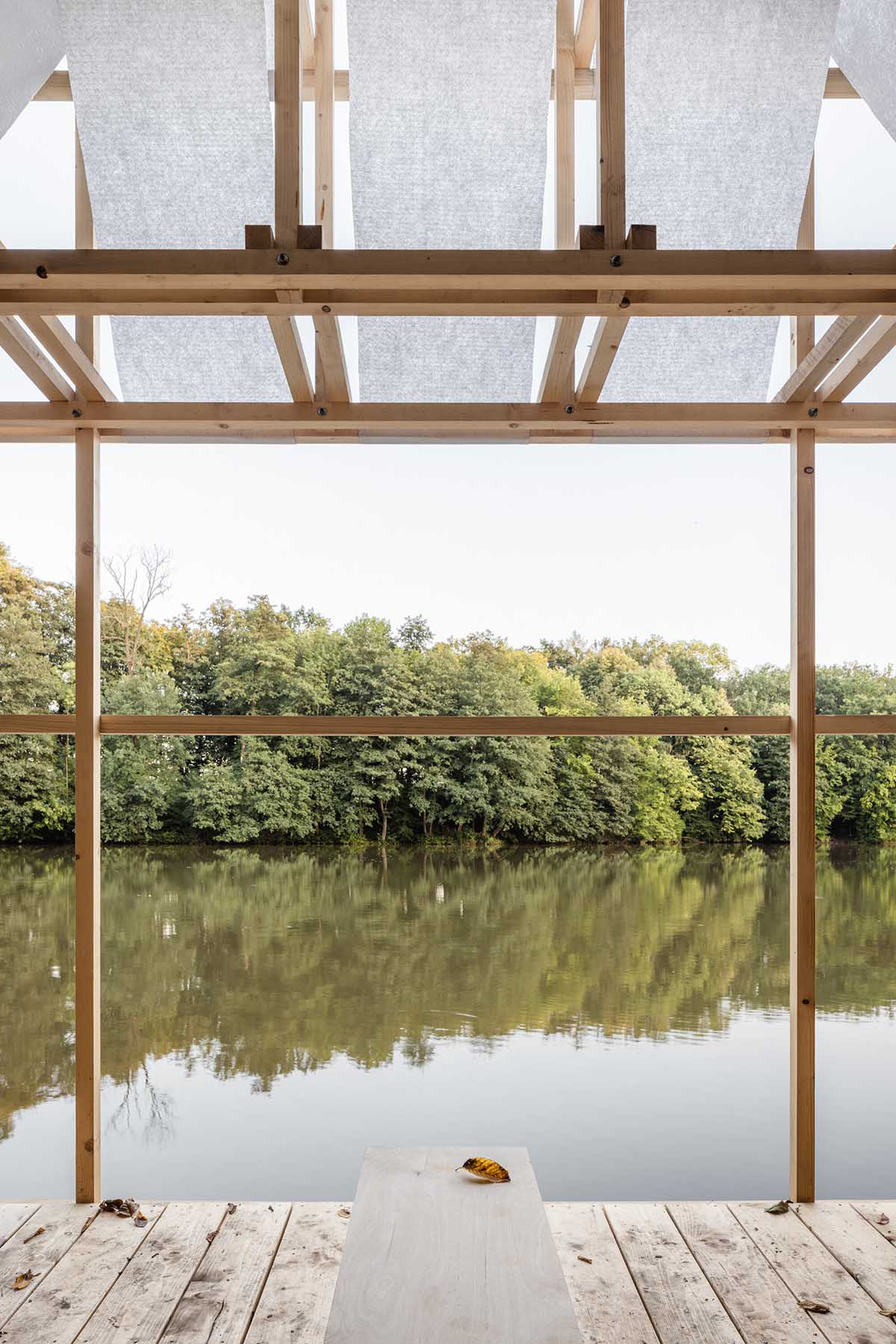
The open entrance frame allows a view into the interior and passers-by can see the tea ceremony in progress.
The height of the table gives it versatility when used both during the tea ceremony or as a bench offering a place for sitting and quiet contemplation, thus following the Japanese ideology focused on simplicity and aesthetic sophistication.
The table becomes the only central furniture of the pavilion, its depth allows the participants of the ceremony to sit in close proximity with a feeling of mutuality.
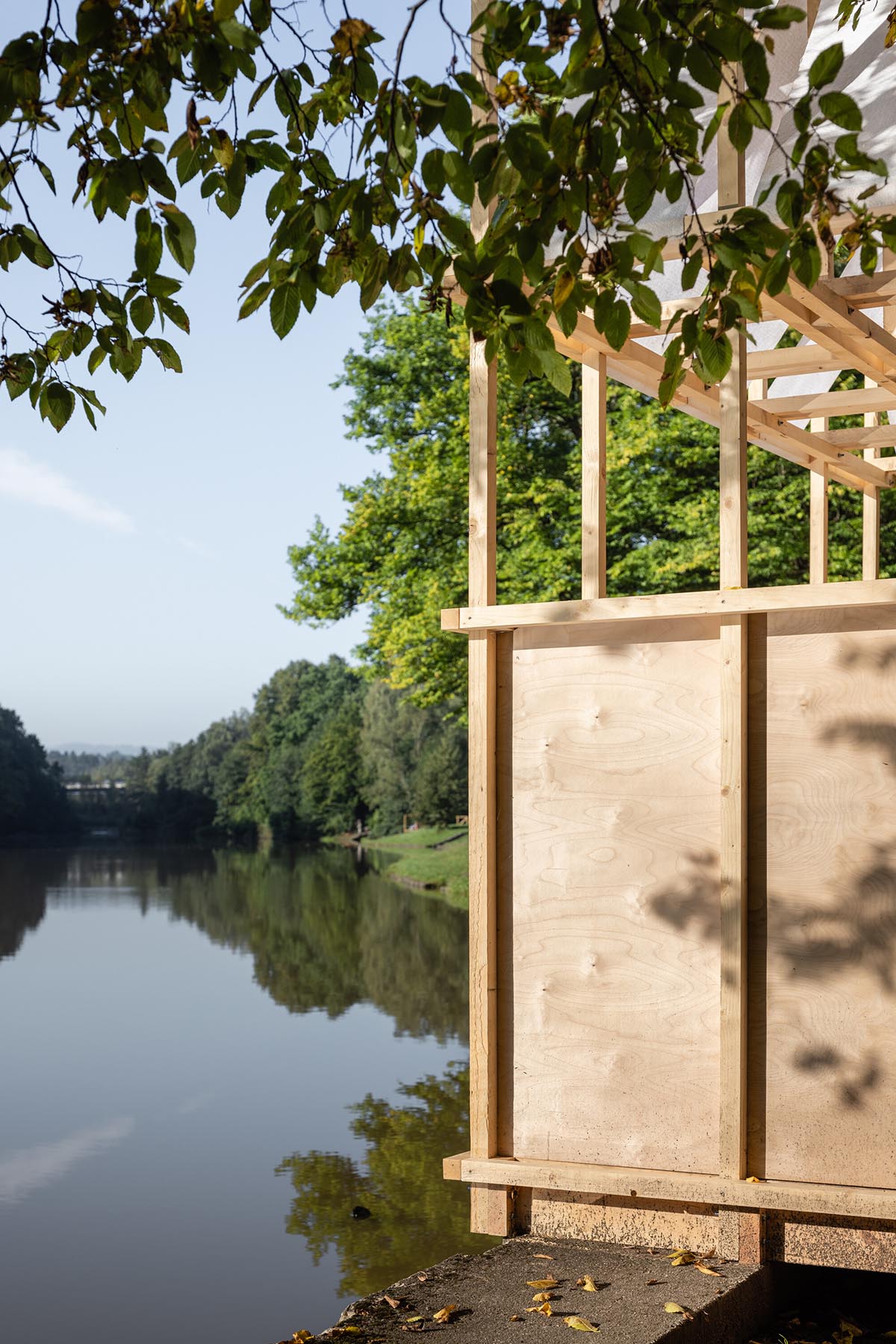
According to the studio, the pavilion has a multifunctional character and, in addition to the tea ceremony, it can also function as a pleasant summer pavilion with soothing views of nature.
Drawn on a square-shaped floor plan, the pavilion refers to simplicity, and the use of primary elements depicts the symbol of matter and man.
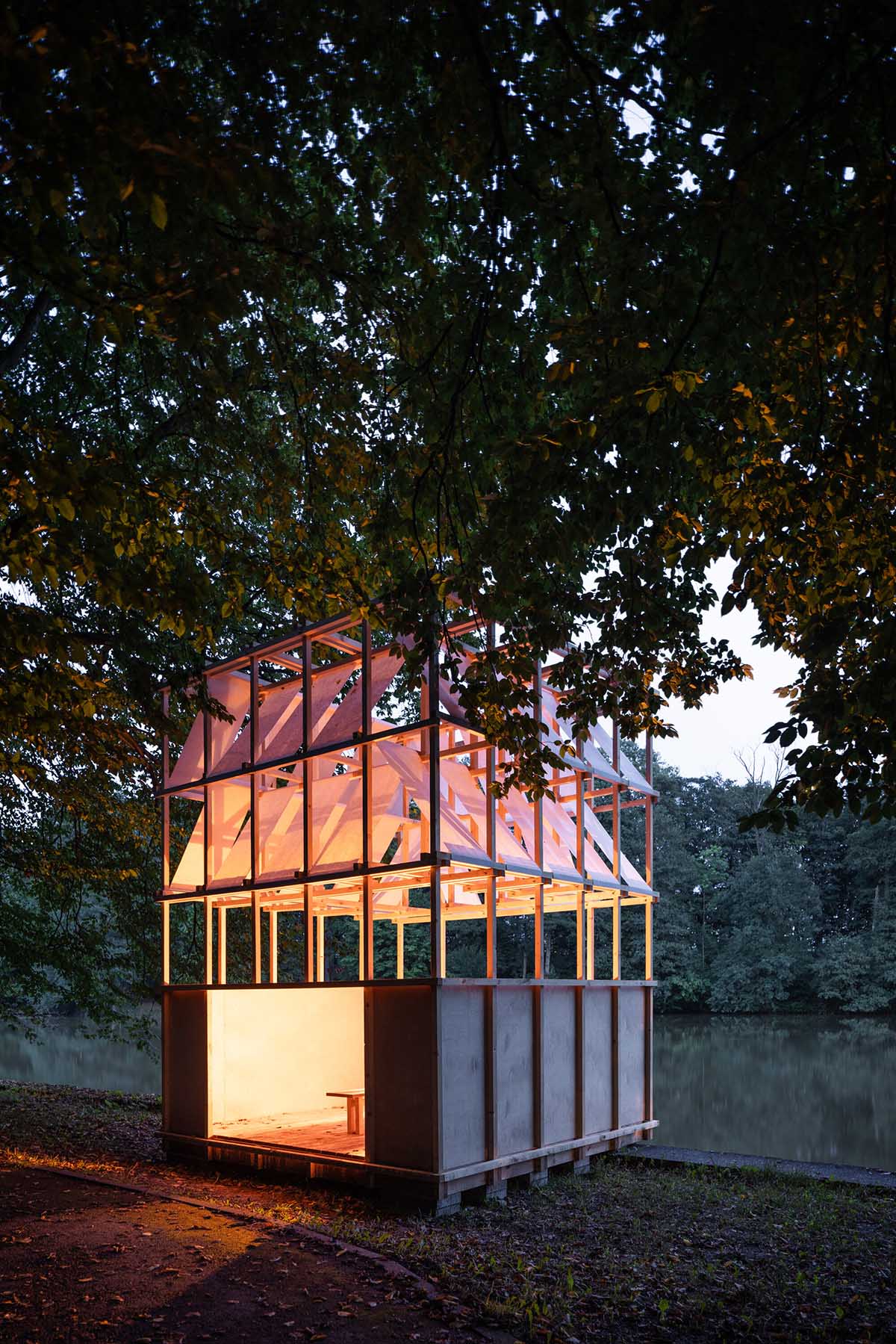
The structure of the pavilion is based on a plan area of 3 meters by 3 meters with a height of 4 meters, which is also the structural height of wooden spruce prisms of square cross-section and the maximum permitted height of the pavilion.
The structure is made of raw wooden elements complemented by a soft fabric to bring a feeling of coziness, while it keeps the pavilion still minimalist. "It does not distract from the ceremony itself, from achieving a sense of peace and harmony," according to the studio.
Other materials used are spruce floor planks, birch plywood and roof geotextile.
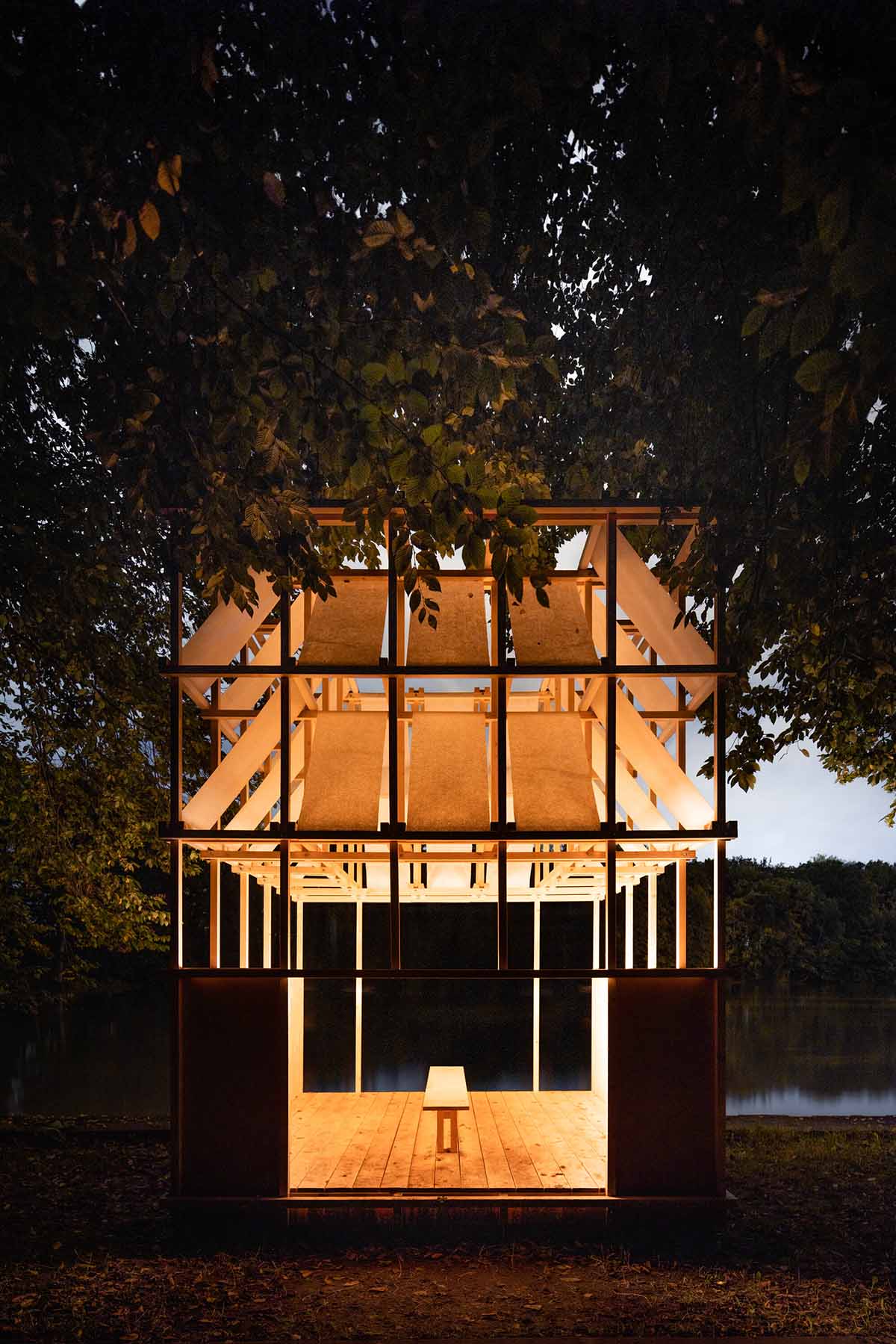
The mass of the pavilion takes references from the shape of traditional tea pavilions. The studio fixes fabric diagonally with closing two side walls with birch plywood, creating an impression of privacy.
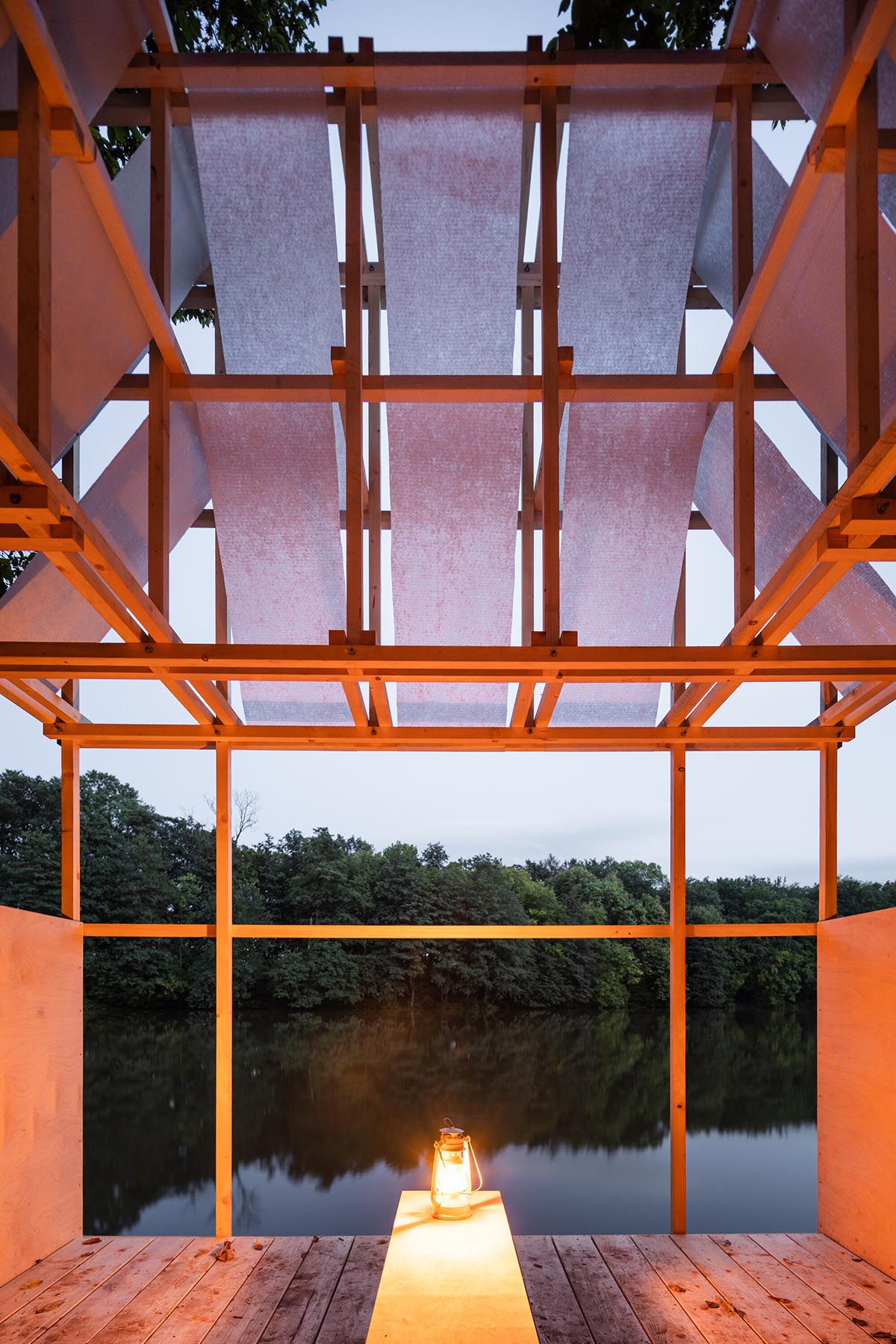
This also provides protection against weather conditions such as sun and rain, which the house provides, but at the same time the frame structure remains airy and open enough to allow a connection with the exterior and the creation of non-traditional views.
Textiles in two levels are also used to bring a certain play to the pavilion, which is meant to evoke traditional Japanese architecture.
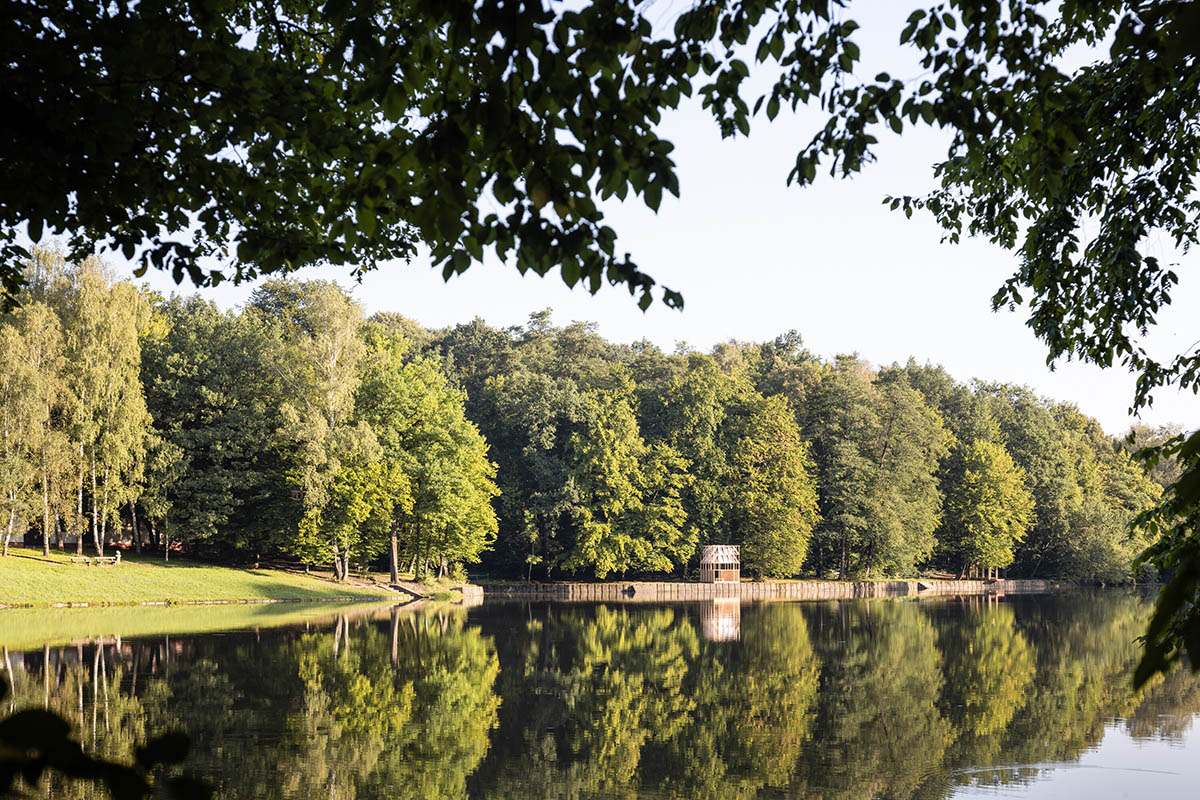

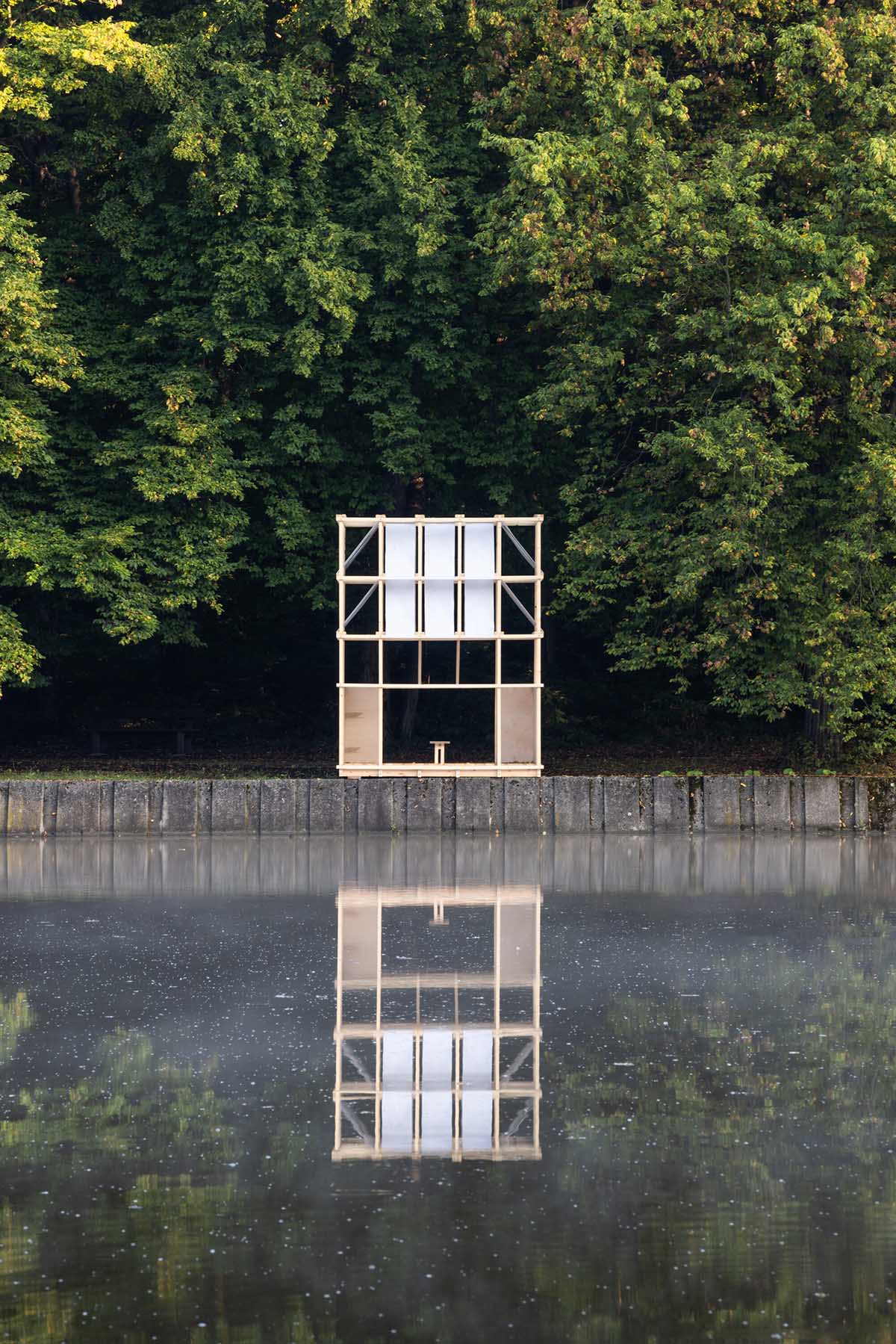
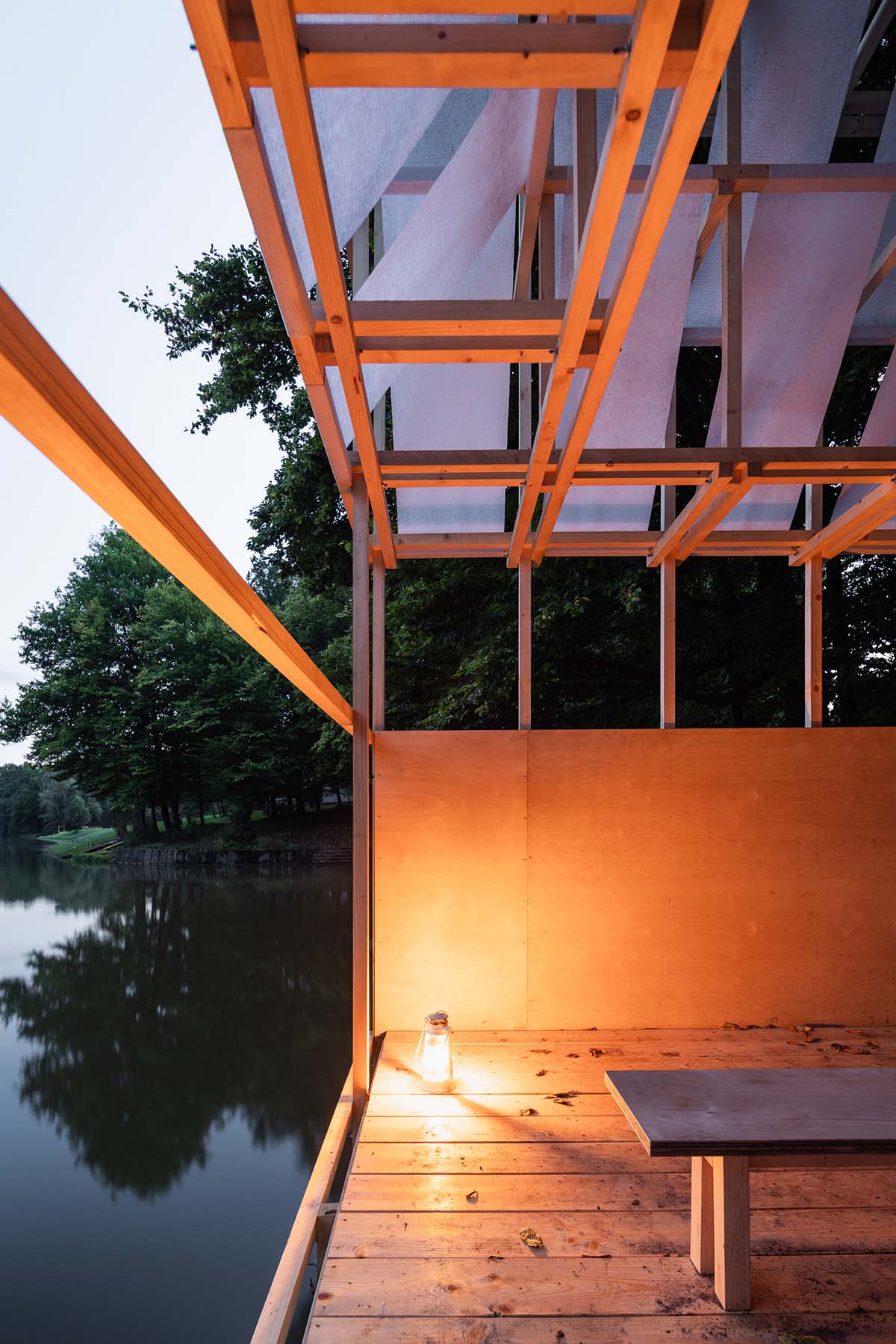
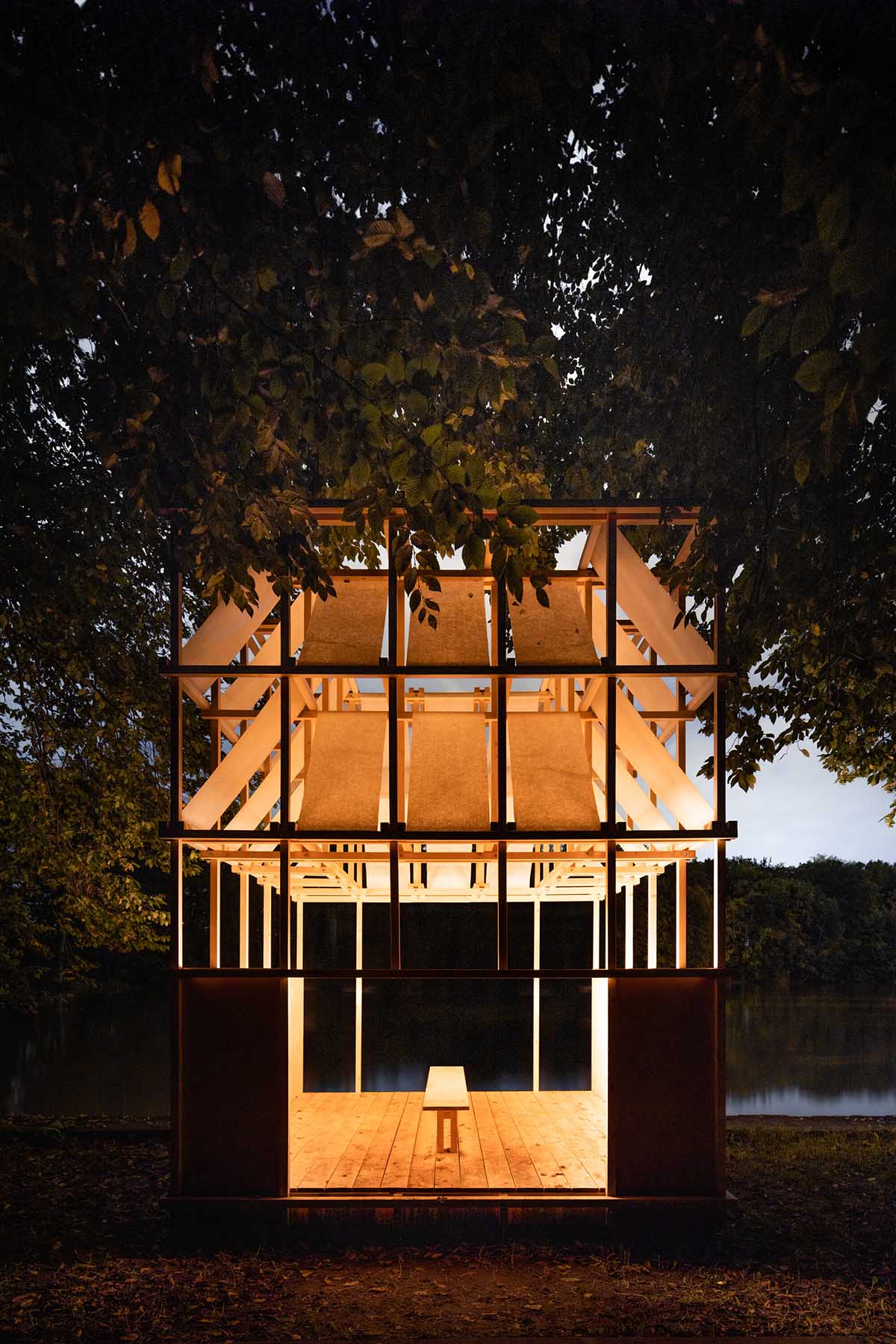

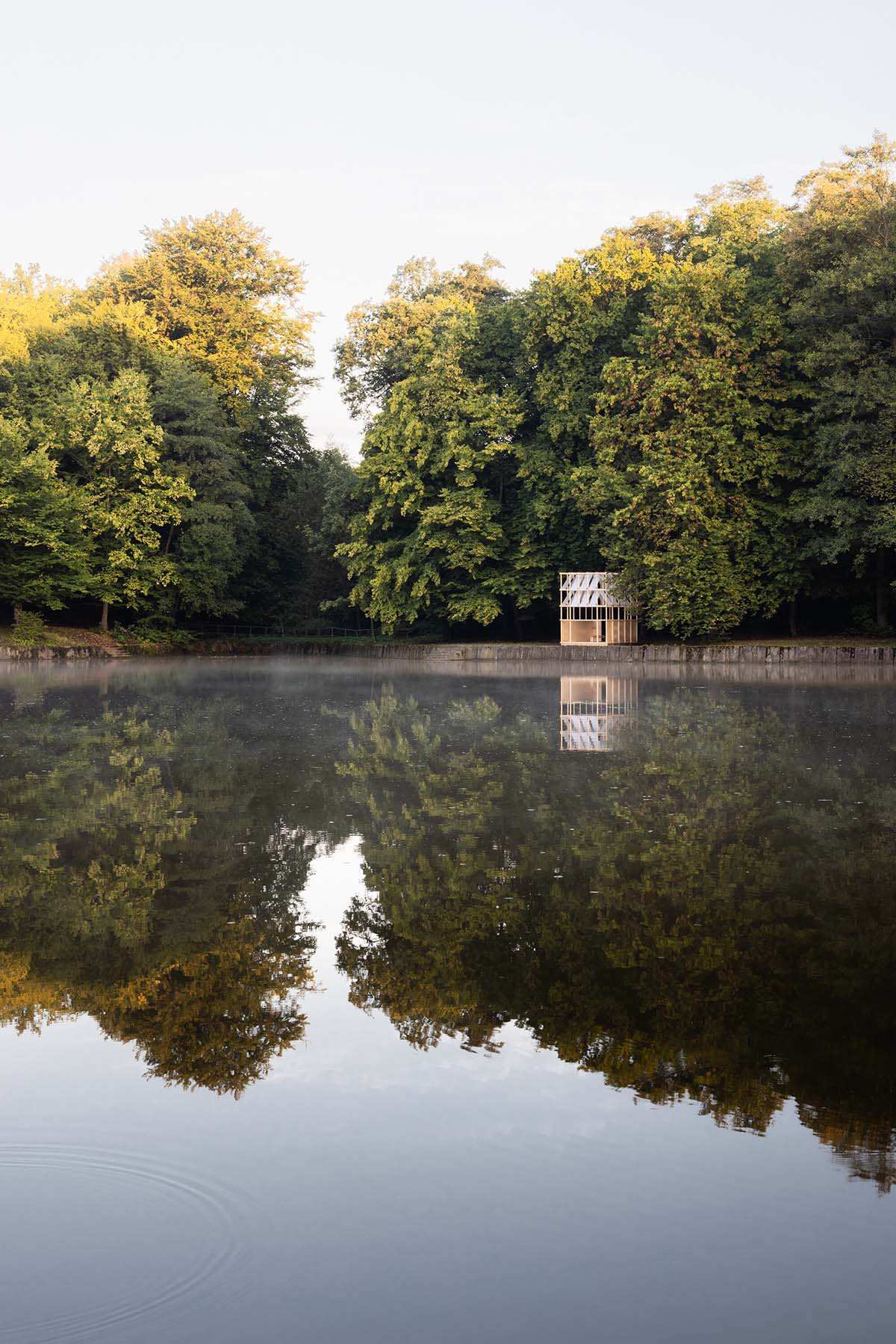
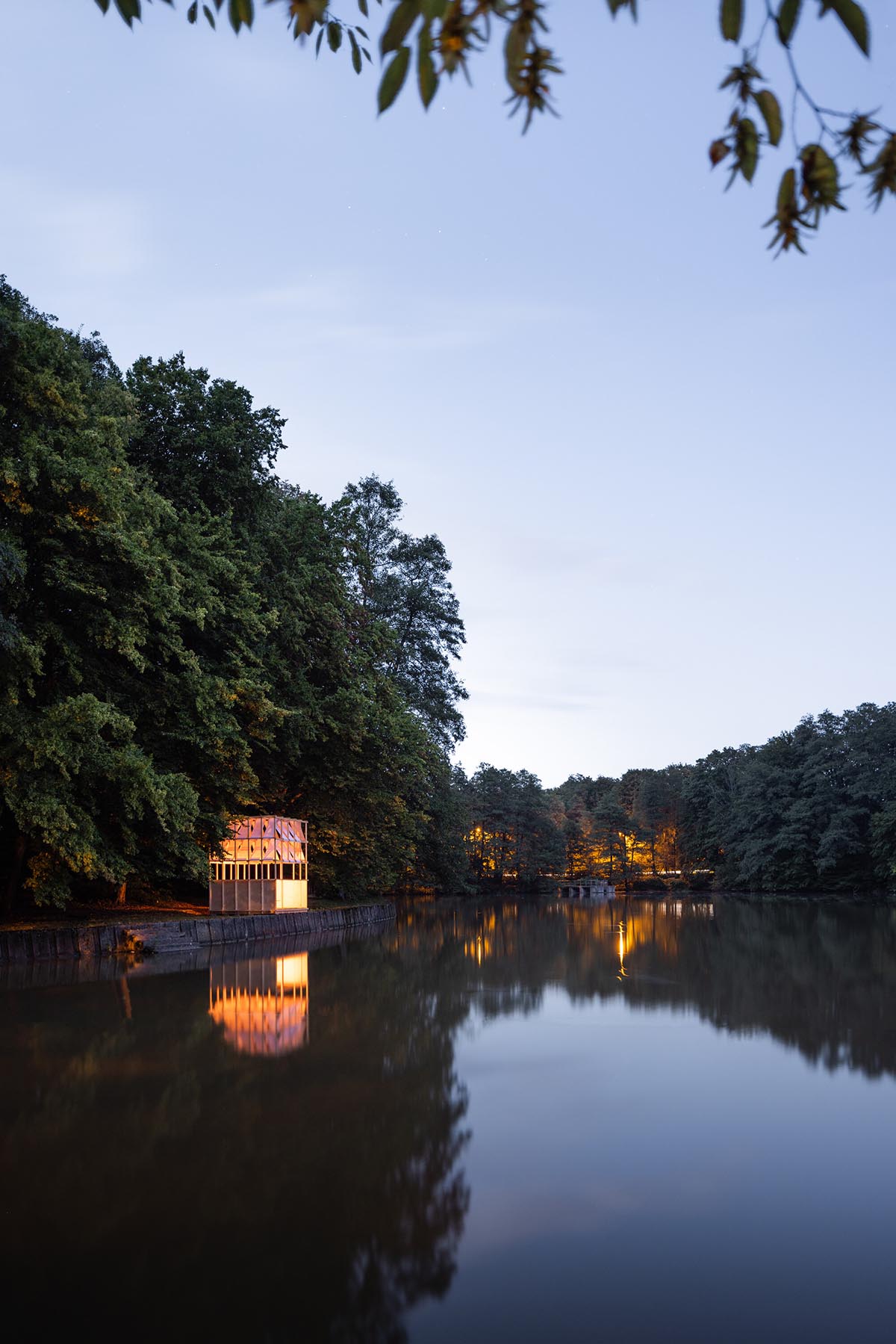
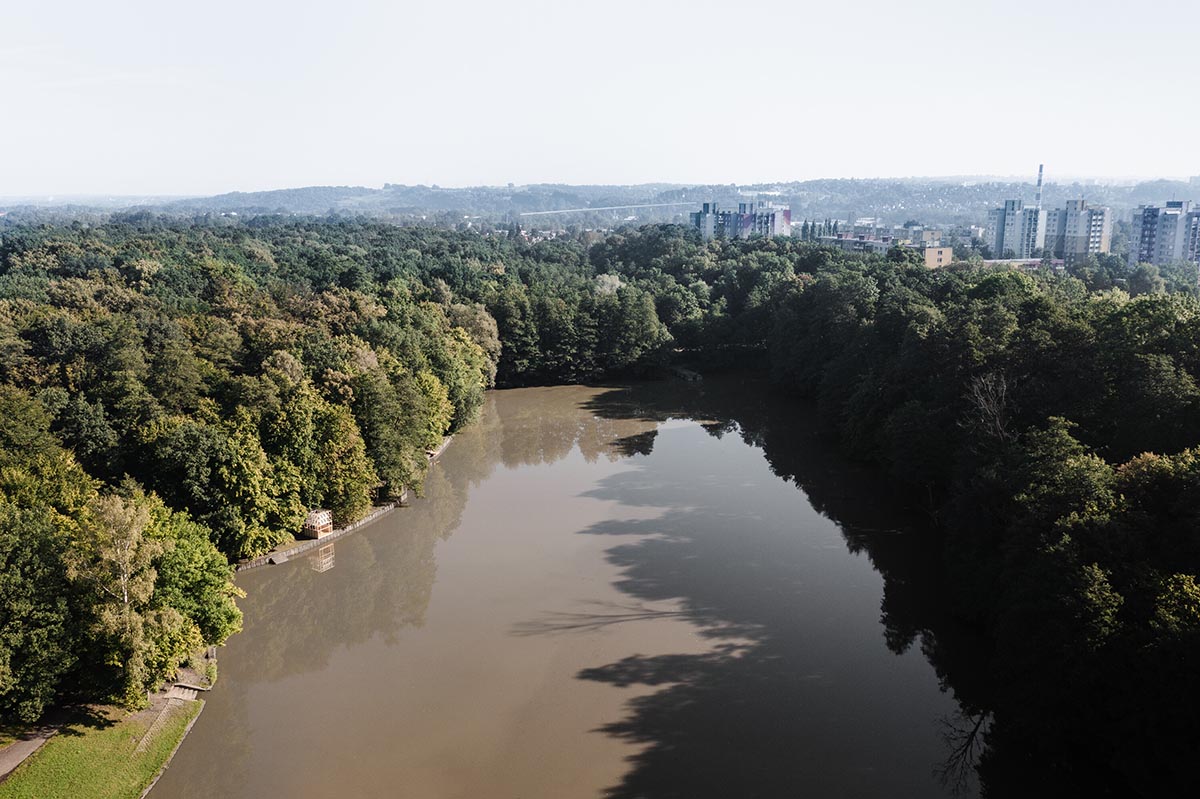
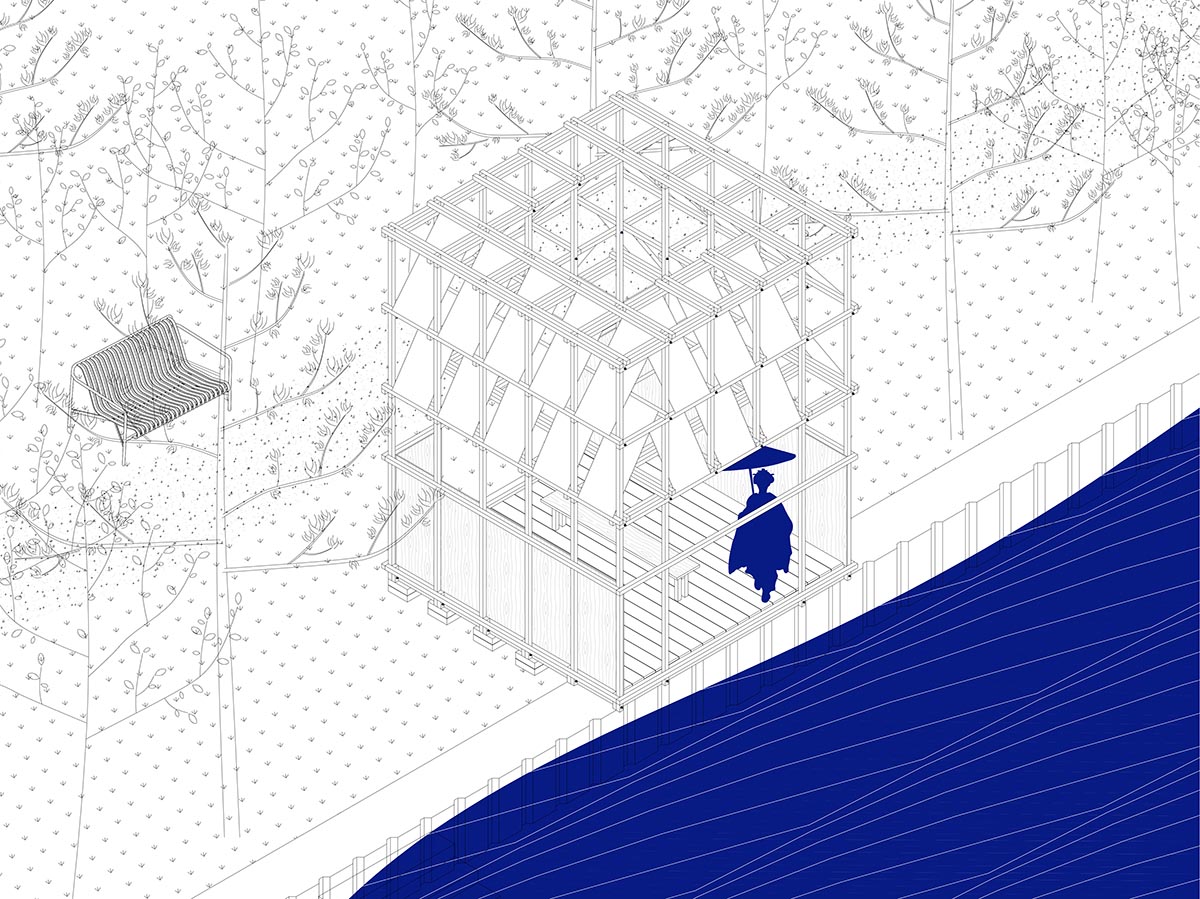
Axonometric drawing
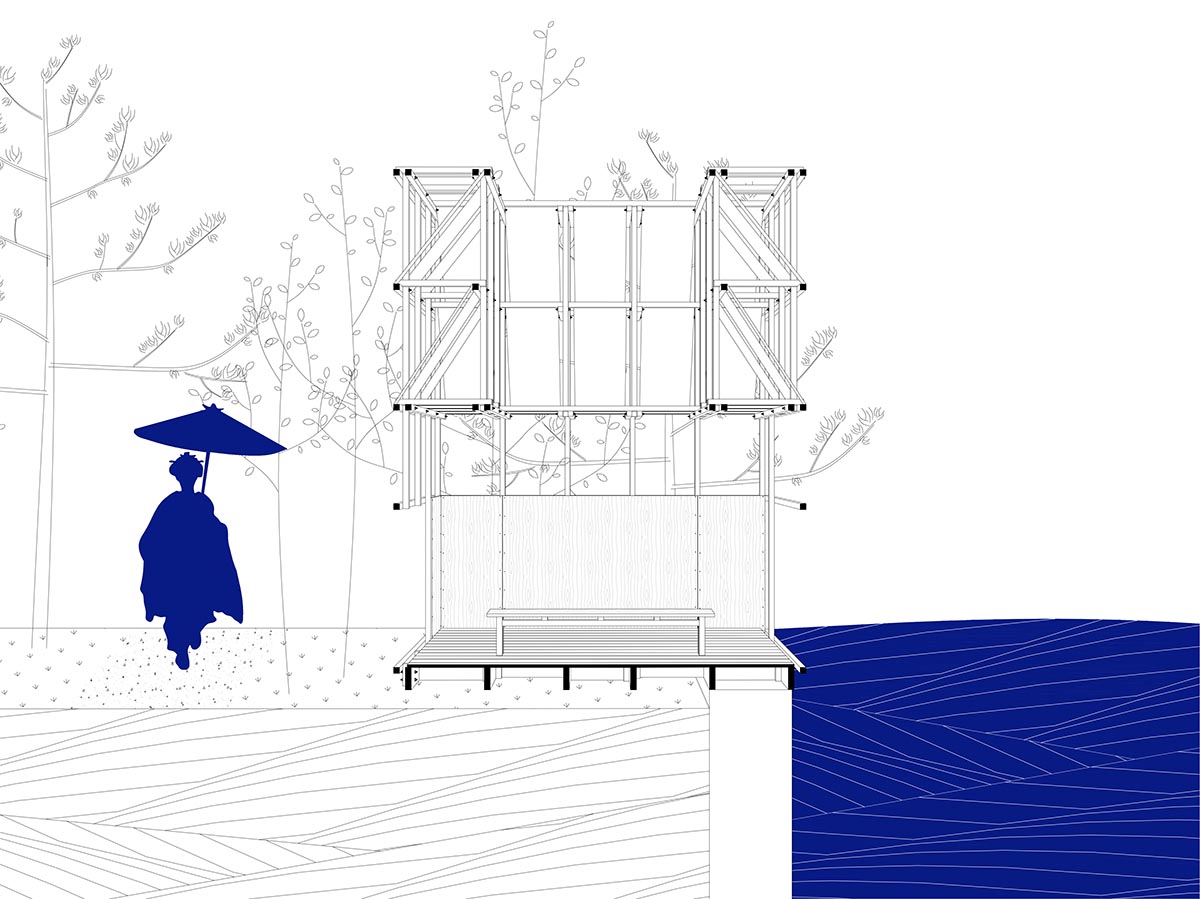
Section
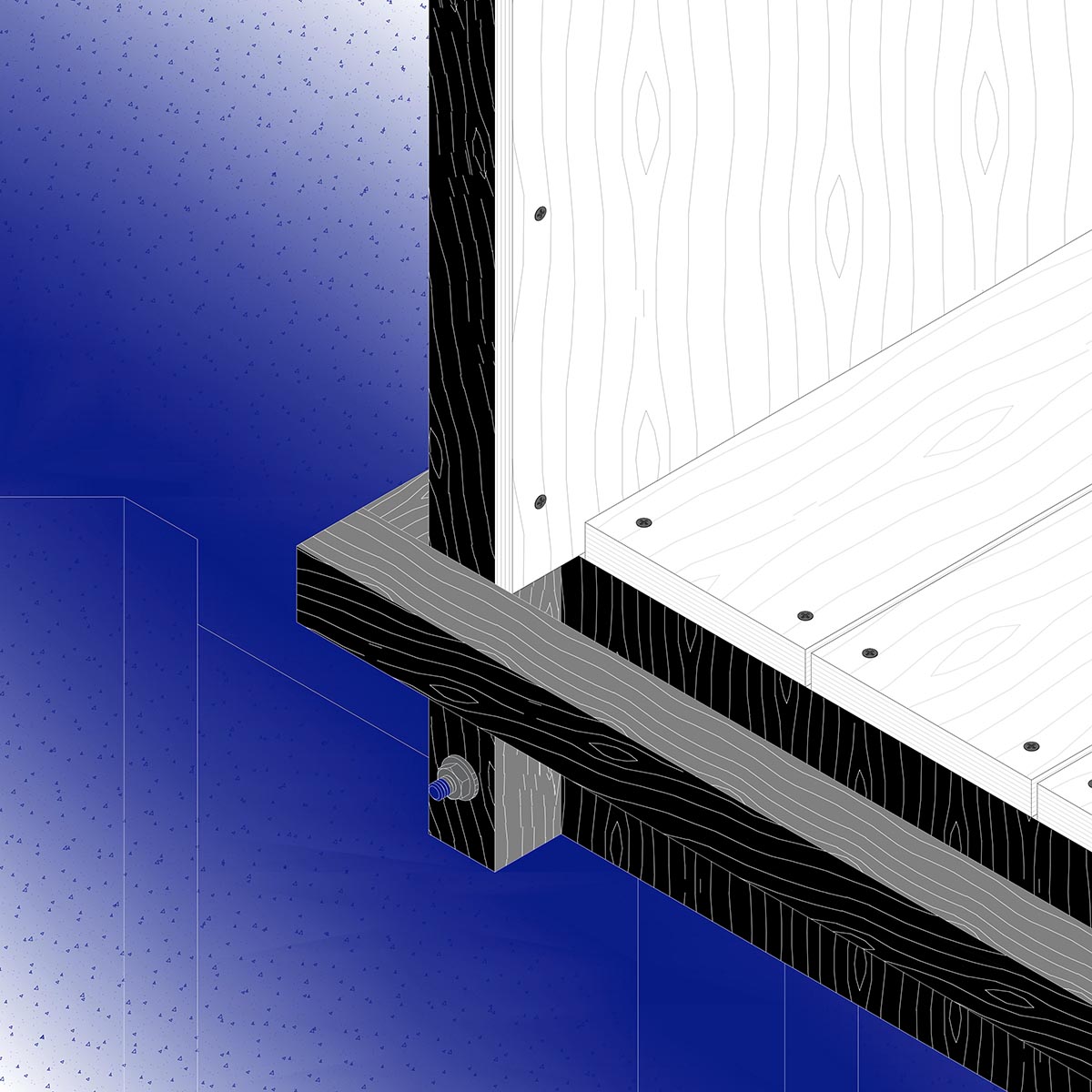
Detail of floor
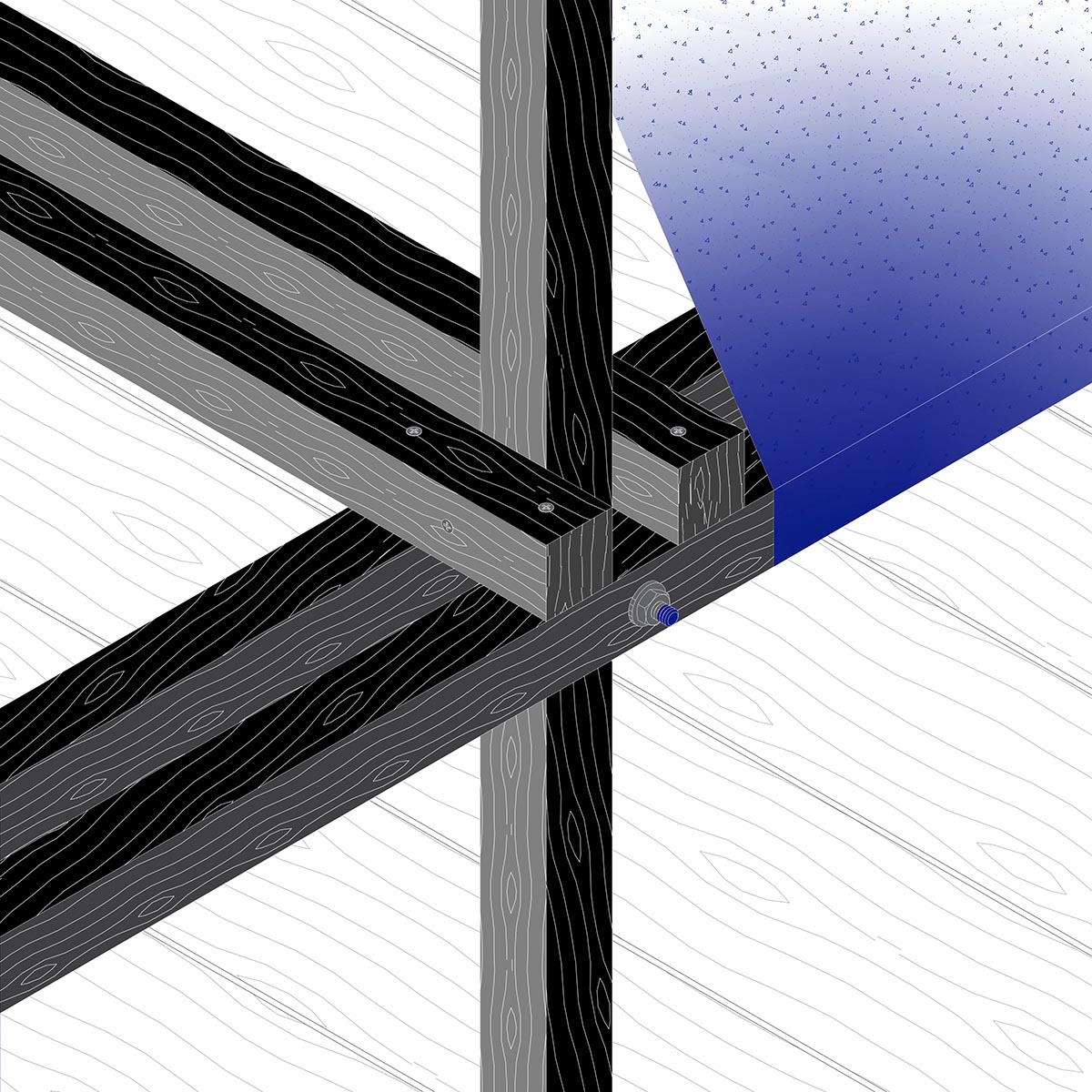
Detail of roof
GRAU was founded in 2014 in Bratislava, Slovakia. The firm recently is led by Andrej Olah and Filip Marčák. GRAU works on different scales of projects, from interiors to public buildings.
Project facts
Project name: Tea House Pavilion
Architects: GRAU Architects
Size: 9m2
Location: Český Těšín, Czech Republic.
Design team: Andrej Olah, Filip Marčák, Jana Filípková, Alexandra Májska
Co-author: [students, workshop participants] Julia Kurnik, Alicja Łosik, Alexandra Gospodarek, Katarzyna Owczarska, Maria Pawłova, Maciej Kuratczyk, Michał Teodorczyk, Jan Chmurski.
Project year: 2022
Completion year: 2022
Client: Mood for Wood
All images © Matej Hakár.
All drawings © GRAU Architects.
> via GRAU Architects
